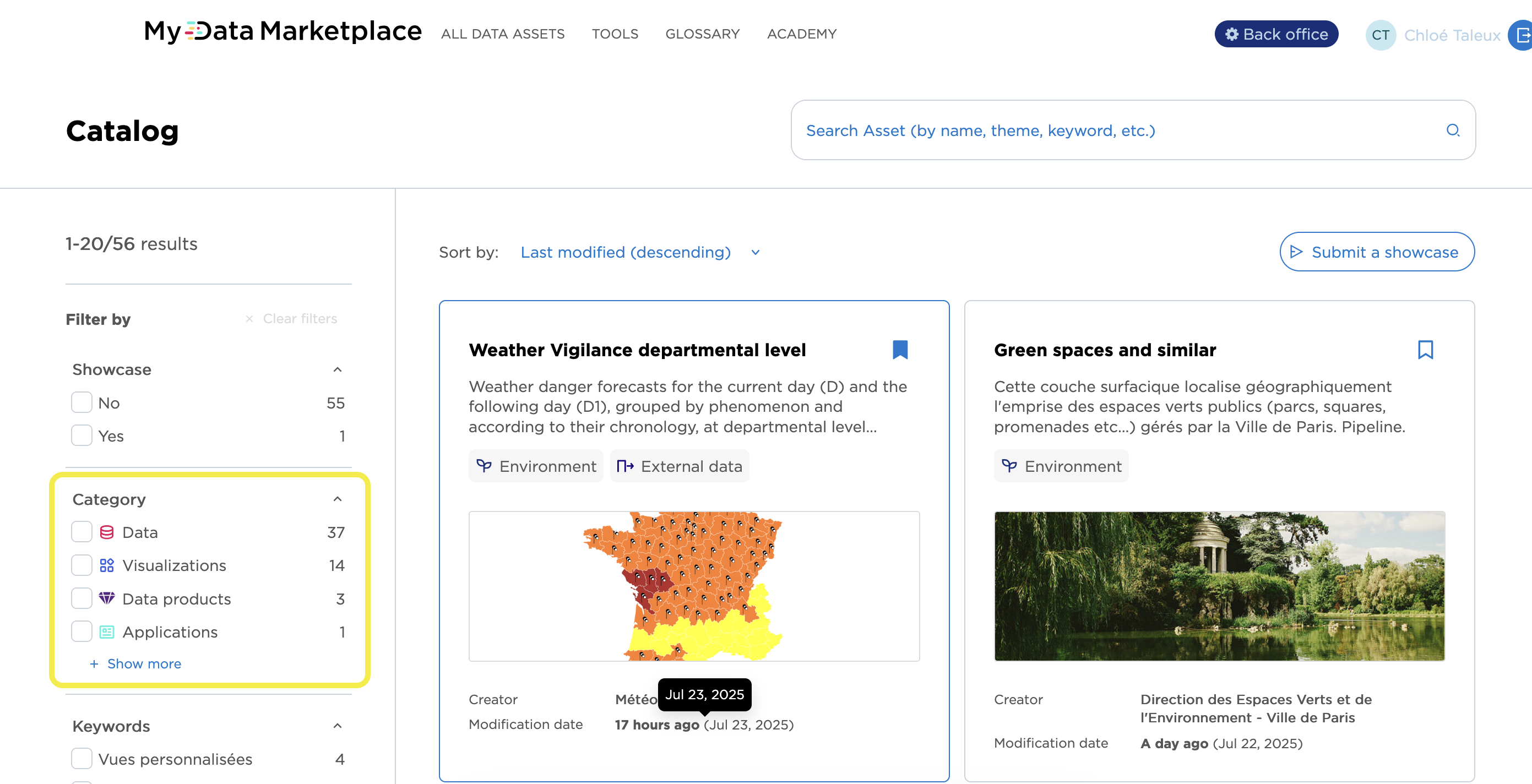Data marketplace: How to transition to the new data marketplace experience
This is our guide to help you through your transition to the new data marketplace experience.
It provides a concise overview of the key changes, as well as the new features you can take advantage of.
Step-by-step, it's designed to help you get the most out of the new improvements and smoothly adapt to your evolving workspace.
Reach out to your CSM or Account Executive if you aren't currently on the new experience and are interested in transitioning now.
The key changes and new features
The new experience takes your existing portal further, letting you operate a complete data marketplace.
Beyond just datasets, now you can manage and share a wide selection of "data assets": data products, assets from data catalogs, BI reports, documents, and more.
We’ve redesigned the experience for both producers and consumers to give you more flexibility and control in managing all of your data assets.
Here’s a quick look at the key improvements:
Centralized management of all your data assets
Manage all your data and assets in one space, in a streamlined and organized way.New features
Build a business glossary, mark assets as favorites, manage access requests, and categorize assets for better organization.Streamlined access workflows
Use native request and approve flows, combined with fine-grained, role-based permissions, so that you control exactly who can find, preview, or consume each data product.
Navigating your workspace's evolution
The new experience is a richer and more powerful one. But that means that some things you're used to are changing.
This guide gives you a clear map of everything that will look or behave differently once you've activated the data marketplace experience on your portal.
Click on the links below to get more information about:
What’s mandatory (things that must change so that no existing element is broken)
What’s new or different (features, menus)
What’s still in the pipeline (workarounds while we put the finishing touches on some features)
Think of it as your “no suprises” checklist. Our goal is for you to get every bit of value out of the new data marketplace experience, and without any pitfalls along the way!

